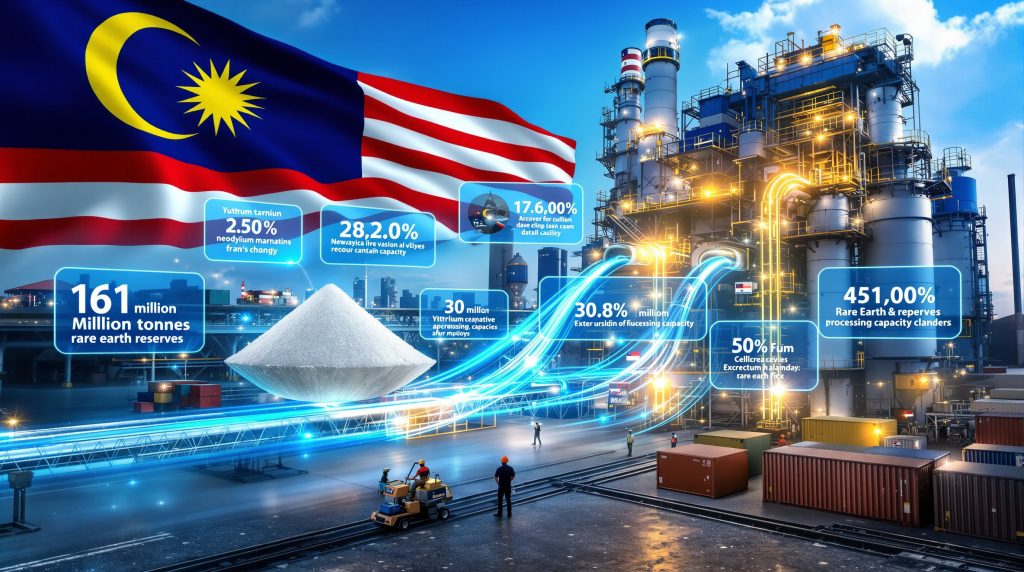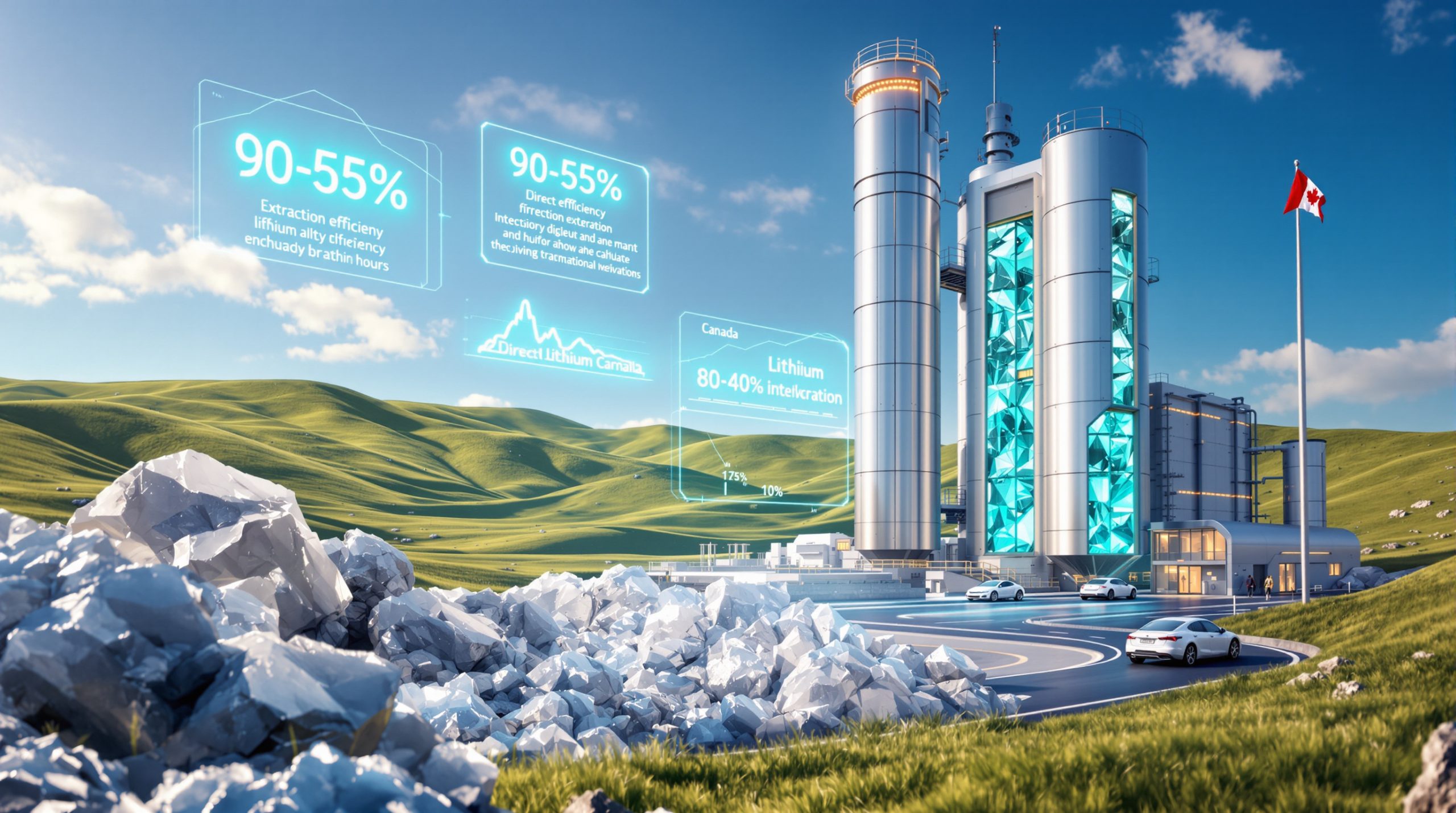Understanding Malaysia's Strategic Mineral Policy
Malaysia's prohibition on exporting unprocessed rare earth elements represents a fundamental shift from traditional resource extraction models. This comprehensive Malaysia rare earth export ban mandates that all rare earth materials undergo domestic processing before international sale, transforming Malaysia from a raw material supplier into a value-added manufacturing hub. Furthermore, this policy reflects the global critical minerals energy transition reshaping resource governance worldwide.
The export restriction specifically targets raw rare earth ores and concentrates whilst permitting the sale of processed products like oxides, metals, and magnet components. Investment, Trade and Industry Minister Tengku Zafrul Aziz reaffirmed in parliament that no raw rare earths will leave Malaysia's shores, emphasising the need to protect domestic resources and spur local value addition.
Processing Requirements and Export Categories
The Malaysia rare earth export ban creates a clear distinction between prohibited and permitted materials:
- Prohibited exports: Unprocessed rare earth ores, mixed concentrates, raw mining materials
- Permitted exports: Separated oxides, rare earth metals, magnet components, processed alloys
- Processing threshold: Any material undergoing chemical refinement or separation within Malaysia qualifies for export
This framework ensures that rare earth oxides such as dysprosium oxide and terbium oxide produced domestically can reach global markets. However, rare earth permanent magnet components manufactured in Malaysia remain exportable under the policy. Consequently, the mineral beneficiation benefits become apparent through this strategic approach.
Reconciling Export Restrictions with US Trade Commitments
Despite signing critical minerals cooperation agreements with the United States during President Donald Trump's visit to Malaysia in October 2025, Malaysia maintains its fundamental export restrictions. The apparent contradiction dissolves when examining the policy's structure: Malaysia commits to supplying processed rare earth products rather than raw materials to American markets.
Policy Implementation Without Compromise
Malaysian officials emphasise that international agreements operate within existing domestic frameworks. As Minister Tengku Zafrul noted in The Edge Malaysia, the policy applies to rare earth elements and critical minerals, but once processed domestically, high-value downstream products can be exported. In addition, the Trump critical minerals order creates opportunities for deeper bilateral cooperation.
| Agreement Aspect | Malaysian Implementation |
|---|---|
| No export restrictions to US | Applies only to processed materials |
| Critical minerals cooperation | Focuses on downstream manufacturing |
| Supply chain diversification | Through value-added production |
| Technology partnerships | Encourages domestic processing investment |
The US-Malaysia critical minerals deal operates as a Memorandum of Understanding framework without legally binding export quotas. Furthermore, this provides Malaysia flexibility to fulfil commitments through processed materials rather than raw concentrates.
Economic Benefits of Domestic Processing Requirements
Capturing Premium Value Through Manufacturing
The transformation from raw material exporter to processing hub generates substantially greater economic returns. Minister Tengku Zafrul was explicit that Malaysia no longer wants to be a country that only digs and ships out cheap raw materials, as reported by Reuters.
The economic multiplier effect of domestic processing captures all downstream value versus raw material exports that capture only extraction costs:
- Raw concentrate exports: Low-skill jobs, minimal technology transfer, commodity pricing
- Processed material exports: High-skill manufacturing, advanced technology adoption, premium pricing
- Integrated supply chains: Research and development capabilities, industrial expertise, strategic partnerships
Value Chain Enhancement Strategy
Processing rare earth elements domestically moves Malaysia up the value chain from extraction to manufacturing. This creates skilled employment opportunities and develops technological expertise that benefits multiple industrial sectors. However, this approach prioritises sustainable economic development over short-term export revenues, reflecting broader mining industry evolution trends.
Lynas Rare Earths as a Processing Model
Successful Integration of International Operations
Australia's Lynas Corporation demonstrates how international companies can thrive within Malaysia's policy structure. The company imports rare earth concentrates from its Australian mines and processes them at its Kuantan facility, producing separated oxides for global markets.
Lynas Operations in Malaysia:
- Processing capacity: Major rare earth separation facility in Kuantan
- Investment commitment: A$180 million heavy rare earth expansion project
- Production targets: 5,000 tonnes annually of heavy rare earth oxides
- Timeline: First samarium production expected by 2026
- Regulatory status: Licence extension granted to 2026 with conditions
Minister Zafrul highlighted Lynas as an example of US-Australia-Malaysia collaboration in building a domestic rare earth ecosystem. The company's presence demonstrates mutual benefits: Lynas gains stable operations whilst Malaysia gains technology transfer and high-value employment.
Expansion and Technology Development
Lynas's heavy rare earth expansion focuses on producing dysprosium and terbium oxides, critical materials for permanent magnets, wind turbines, and electric vehicle motors. The feedstock diversification strategy includes materials from the Mt. Weld mine and additional sources. Consequently, this supports Malaysia's goal of becoming a regional processing hub.
Emerging Joint Ventures and Strategic Partnerships
New Malaysian-American Collaborations
DTEC Mineral & Metal Technology represents a groundbreaking Malaysian-American joint venture establishing integrated mining and processing operations. This first-mover venture demonstrates how Malaysia's policy attracts investment from Western companies seeking alternatives to Chinese supply chains.
Strategic Partnership Benefits:
- Technology transfer from international partners
- Local job creation in high-value manufacturing
- Reduced dependence on single-source supply chains
- Enhanced processing capabilities for domestic resources
Southern Alliance Mining's Strategic Positioning
Malaysia-based Southern Alliance Mining operates the Chaah Mine, producing iron ore, crushed materials for pipe coating, gold, and rare earth elements. Chief Operating Officer Wei Hung Lim confirmed that currently all rare earth element exports go to China, but emphasised openness to working with diverse partners.
The company's existing mining infrastructure and expertise provide a foundation for rare earth expansion. Furthermore, this represents portfolio diversification from traditional iron ore operations into strategic minerals processing.
Balancing Eastern and Western Investment Interests
Non-Aligned Resource Diplomacy
Malaysia's approach attracts capital from both Chinese and Western sources, creating competitive investment environments that benefit domestic development. This strategy positions Malaysia as a neutral processing hub serving multiple global markets, despite ongoing US-China trade impacts affecting global supply chains.
| Eastern Partnerships | Western Partnerships |
|---|---|
| Processing technology sharing | Advanced separation techniques |
| Manufacturing expertise | Environmental standards |
| Market access opportunities | Supply chain diversification |
| Industrial development funding | Research and development collaboration |
The deliberate engagement with multiple investors creates competitive dynamics where investment competition drives more favourable terms for Malaysia's development. In addition, this maintains strategic flexibility.
Sovereign Wealth Fund Initiatives
Malaysia's Khazanah Nasional sovereign wealth fund actively evaluates joint ventures with international partners to establish rare earth refineries. These initiatives demonstrate government commitment to developing domestic processing capabilities through strategic partnerships.
Khazanah's evaluation of joint ventures with Chinese companies for refinery construction underscores strategic cooperation. However, Malaysia courts both Chinese and Western investment to accelerate development whilst maintaining technological neutrality.
Malaysia's Rare Earth Resource Potential
Geological Assets and Development Opportunities
Malaysia possesses approximately 16.1 million tonnes of rare earth deposits, representing significant untapped potential for domestic processing industries. These resources include both light and heavy rare earth elements, with particular strength in ionic clay deposits rich in valuable heavy rare earths.
Resource Distribution Characteristics:
- Total estimated reserves: 16.1 million tonnes
- Deposit types: Ionic clay formations, traditional hard rock deposits
- Geographic distribution: Multiple regions across peninsular Malaysia
- Heavy rare earth content: Particularly valuable for advanced technology applications
Current extraction levels represent only a fraction of Malaysia's geological potential. The processing-first policy ensures that future resource development occurs within integrated supply chain frameworks rather than simple extraction operations.
Global Supply Chain Diversification Impact
Creating Strategic Alternatives
Malaysia's processing-focused approach provides international manufacturers with alternatives to Chinese-dominated supply chains. By developing domestic processing capabilities, Malaysia positions itself as a strategic bridge between resource-rich regions and technology-dependent markets.
Supply Chain Benefits:
- Geographic diversification: Reduces single-country dependence
- Processing alternatives: Multiple sources for refined materials
- Strategic partnerships: Bilateral cooperation opportunities
- Risk mitigation: Enhanced supply security for critical applications
Supporting Allied Strategic Objectives
The Malaysian model aligns with broader Western efforts to develop resilient critical mineral supply chains. By requiring domestic processing, Malaysia creates opportunities for technology partnerships and long-term supply agreements that support allied strategic objectives.
For Washington, the Malaysia deal represents part of a broader effort to secure critical minerals from allied nations. Furthermore, this positions Malaysia as a potentially important alternative source for US manufacturers if Chinese supplies become constrained.
Implementation Challenges and Solutions
Technology Transfer and Expertise Development
Developing comprehensive rare earth processing capabilities requires advanced separation technologies and specialised expertise currently concentrated in few global locations. Malaysia must attract international partners willing to share proprietary technologies and establish training programmes.
Development Requirements:
- Advanced separation and purification technologies
- Specialised technical expertise and training programmes
- Environmental management systems for processing operations
- Quality control standards for international market access
Environmental and Regulatory Compliance
Processing rare earth elements involves managing radioactive materials and environmental impacts. Malaysia must balance industrial development with strict environmental and safety standards, as demonstrated by regulatory conditions placed on existing operations like Lynas.
The government's conditional licence extension to Lynas until 2026, requiring removal of radioactive waste from feedstock, indicates a controlled path. However, this allows continued operations whilst meeting stricter processing standards.
Future Development Projections
Medium-Term Industrial Expansion
Over the next 3-5 years, Malaysia expects increased investment in processing facilities as international companies adapt to the new policy framework. This period will likely feature expanded partnerships with both Eastern and Western technology providers.
| Timeline | Expected Developments |
|---|---|
| 2025-2026 | New processing facility announcements |
| 2026-2027 | Expanded production capacity online |
| 2027-2030 | Integrated supply chain maturation |
| Beyond 2030 | Regional processing hub establishment |
The landscape could shift significantly as investments materialise, with new joint-venture refineries and separation plants coming online. Furthermore, these partnerships with Australian, American, or Chinese firms will reshape the industry.
Strategic Positioning for Long-Term Growth
Malaysia's ultimate objective involves becoming an indispensable link in global rare earth supply chains. The country aims to offer processing services and finished products to multiple international markets whilst maintaining resource sovereignty and capturing maximum economic value.
Should Malaysia begin extracting its estimated 16 million tonnes of rare earth reserves, current policy ensures all ore will be refined domestically. Future mining projects will likely include onshore processing facilities, strengthening Malaysia's industrial base and deepening technological expertise.
Geopolitical Balancing and Strategic Implications
Non-Aligned Strategic Positioning
Malaysia's balanced stance attracts capital from both East and West whilst maintaining strategic autonomy. By engaging with the US on critical minerals, Malaysia gains leverage and strategic alternatives beyond Beijing's orbit, even as it continues project discussions with Chinese entities.
This non-aligned strategy provides Malaysia a stronger bargaining position in economic and geopolitical arenas. Consequently, this positions the country as a bridge in the global rare earth supply chain where industrial policy, technology transfer, and geopolitics converge.
The success of Malaysia's rare earth export ban and processing-first strategy will influence how other resource-rich nations approach critical mineral development. Furthermore, this may create a new model for sustainable resource extraction that prioritises domestic value creation over raw material exports.
Disclaimer: This analysis contains forward-looking statements regarding Malaysia's rare earth policy implementation and market projections. Actual outcomes may differ based on regulatory changes, market conditions, and geopolitical developments. Investment and policy decisions should be based on comprehensive due diligence and professional consultation.
Looking to Capitalise on Malaysia's Rare Earth Processing Boom?
Discovery Alert's proprietary Discovery IQ model delivers real-time alerts on significant ASX mineral discoveries, including rare earth and critical mineral opportunities that could benefit from Malaysia's value-added processing strategy. Begin your 30-day free trial today and position yourself ahead of the market as global supply chains transform and new strategic partnerships emerge.




